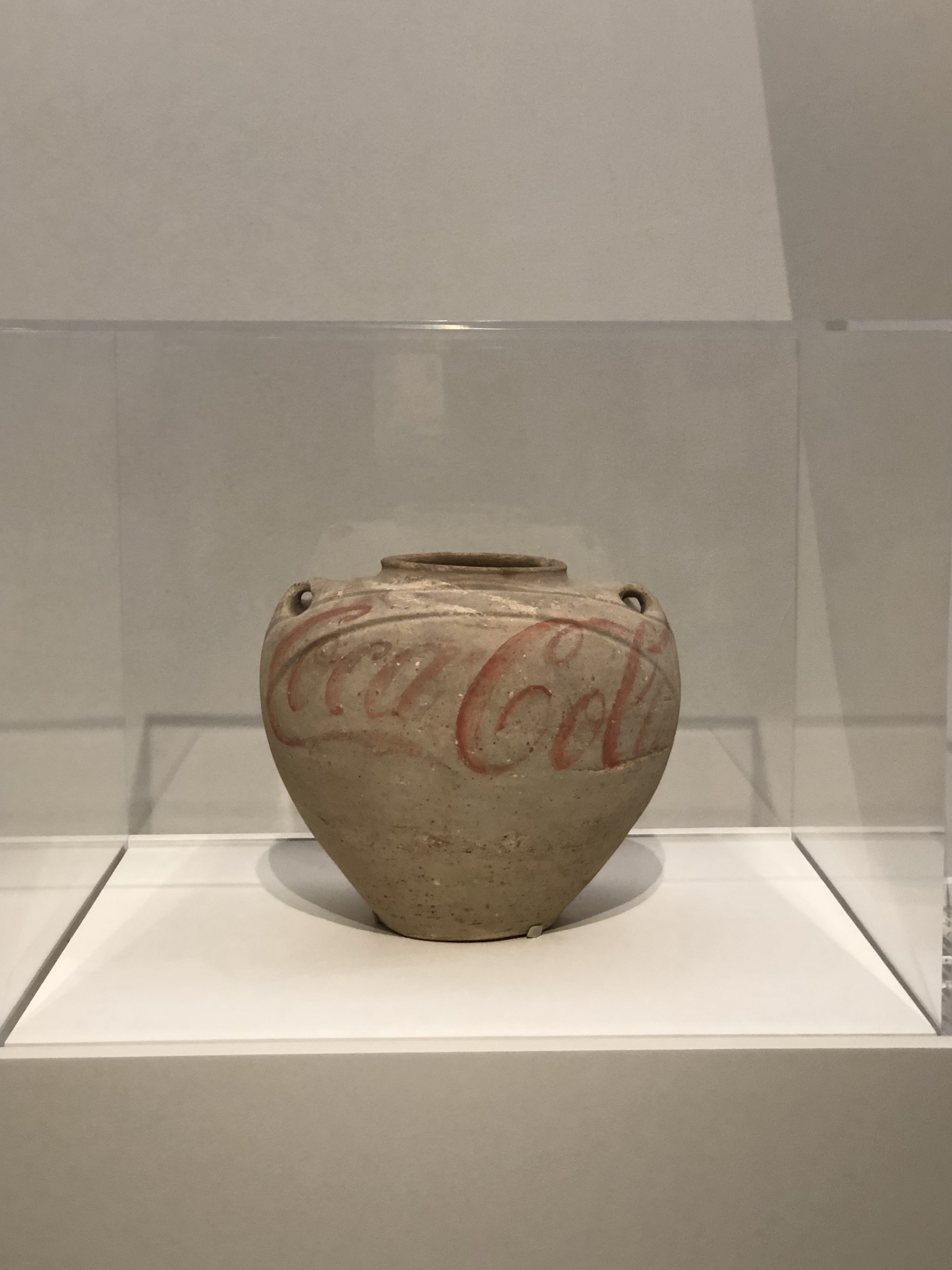Guggenheim: Art and China after 1989: Theater of the World
Artist 1 – name: Hongtu Zhang
Title of their artwork: Last Banquet
Describe: Material description only:
The artwork itself uses acrylic to paint on canvas, however, when it was installed, it was on an image on a book page that is displayed on a table with glass around it.
Analysis:
Since originally the artwork is displayed as an image on a book page that was opened, people will feel and see the artwork itself differently. With the white border around the artwork itself, it makes the image of the artwork seems more delicate. In the image, people can see different people talking with different hand gestures. In the middle, the viewers can also see a person sitting seriously and the face looks towards the center. The hands of the person are laid wide opened with balance distribution. Moreover, there is a red table with dishes on it that is included in the artwork and it seems like the figures are in a room with brown-painted walls. The uniform that they are wearing is all darkish colors, for example, dark green, black and brown. Lastly, the faces features are not clear, but there is a strong focus point towards the center and it shows a one-perspective view of the room too.
Interpretation (connections):
The artwork first reminded me of the painting the Last Supper by Leonardo Da Vinci. Since Last Supper was analysis by many people and it is a significant work, therefore many viewers must have recognized it is referenced from it. The person sitting in the middle is clearing chairman Mao, and the original painting Last supper, it is Jesus sitting there. As result, there is not only a way of appropriation but also culture jamming by using the most significant Christianity artwork’s structure to convey Chinese culture.
The Last Supper is about Jesus balanced in the middle and people who are surrounding him are his followers. As Hongtu has altered into his Chinese culture, Chairman Mao was like a god and people around him are politicians who followed him and see him as a higher and above figure. Moreover, if you look closely at the object on the table that is front of Chairman Mao, you can see that it is a three head microphone. Only him has the microphone towards himself, so it also represents he is the main speaker and the only person who decides everything. I find how interesting Hongtu have used a western famous art piece and altered into an Asian identity; it really shows two cultural aspects and adapting the Last Supper‘s meaning in his own cultural identity.
Judgment or Evaluation:
Overall, I think the artist has successfully used appropriation in this artwork and it is very smart of him to relate both completely different culture into one meaning/representation. Lastly, I would be interested to see the actual canvas work by wanting to know how big the actual work is and look at it to see if there are any textures standing out too.
Artist 2 – name: Ai Wei Wei
Title of their artwork: Han dynasty with Coca-Cola Logo (1993)
Describe: Material description only:
The Material that Ai Wei Wei have used is a Chinese style ceramic and red paint of the Coca-Cola sign that is in the ceramic.
Analysis:
The ceramic pot is from the Han dynasty and it is a ready-made object. The Coca-Cola sign looks almost faded, but it is definitely a modern logo that is painted in the modern days. Throughout discussion and looking at the artist statement, the ancient ceramic pot is very valuable and is ironic that the artist has painted a western logo on the pot.
Interpretation (connections):
The way her combined both Western factor and Chinese factor into one piece is iconic because the subjects that he has used. The Coca-Cola is widely known and is a popular drink that is invented in the Western society, but the ancient Han Dynasty ceramic pot represents Chinese culture and it is something vulnerable. What he wanted to culture jam was to show that China is like the rest of the world where there is global consumerism, it is not just an ancient city. The iconic Coca-Cola sign is a way of culture jamming the western logo to convey his thoughts and meanings about China.
Judgment or Evaluation:
Furthermore, Ai Wei Wei’s work is both ironic and iconic. The way he uses a ready-made object to produce his style of work is impressive. Just by adding one logo gives the object a completely different meaning. Moreover, since the logo is starting to fade away, I am just wondering if himself will repaint it to make it look bold again.

